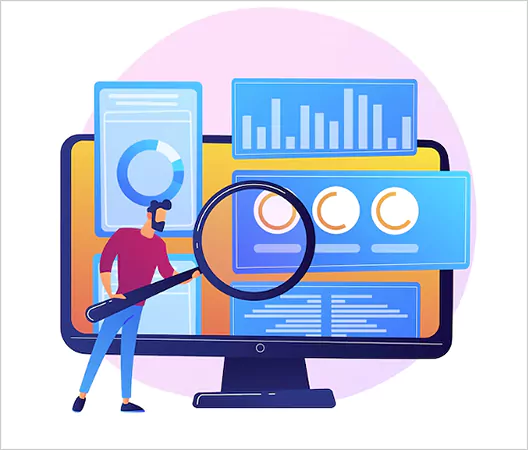A Comprehensive Guide to Applying Data Loss Prevention Best Practices
Data is known to be a valuable asset, and protecting your digital assets in the business landscape should be your top priority. Regardless of the size of your company and its operating location, there will always be a likelihood of data breaches or theft.
So to ensure your business’s long-term security, Data Loss Prevention (DLP) is something that can be embraced to protect the organization.
If you are new to this approach and don’t know where to begin, we’ve got you covered. Read ahead for some of the best practices that can help your company secure its most valuable assets.
What is Data Loss Prevention?
Data Loss Prevention is the practice of detecting vulnerabilities and creating an unbreakable barrier between scammers and digitally confidential assets. DLP can help organizations protect their sensitive and confidential information from being compromised. It helps to find, stop, and fix the theft of private specifics by external or internal threats.
Moreover, it helps define policies and procedures for the organization. This keeps an eye on information sources, educates employees about DLP risks, and takes every preventive measure to safeguard the companies’ core details.
Hence, below are the practices mentioned that must be followed to get the most out of data loss prevention.
Best Practices for Data Loss Prevention in Your Company
Before implementing data loss prevention practices, you need to separate confidential information. Then, collect all the data that is somehow crucial for your company in one place, impose limited access to it, and keep tight security authentication to protect it at any cost.
Additionally, you can also introduce data loss prevention practices to protect your company’s growth and reputation at any cost.
Ensure Data Encryption
The company systems and portable devices should enable encryption of all the data related to the company, both at rest and in transit. The employees can use their Windows devices to encrypt the data using the Encrypting File System (EFS) tool, which later gives access only to authorized users to modify the file.
Limit Access to Confidential Information
Restricting access to confidential information ensures data breaches, as you have the authority to disseminate data to specific individuals. Also, organizations should remain more careful about shared resources, both in and out of the organization.

As these resources could increase the risk, they should have rules limiting access or permission for these resources and when the work is done, should remove the access instantly.
Regulate Data Monitoring
By keeping a regular track of your data, you will be able to detect suspicious activities and vulnerabilities and resolve them instantly. Moreover, it will also help you identify if anyone has made a secret attempt to damage, modify, or copy your sensitive files.
If found, the organization and protection teams should always watch for and respond to these inappropriate actions.

Implementing Automation for Extra Protection
Automation can be an ideal solution to avoid data breaches in MNCs and the IT industry. As it will automatically update the software, enforce policies, detect and eliminate suspicious activities and more.

Automation can monitor emails and the web to identify malicious content. Hence, email security protocol should be considered by every business. It can help filter phishing attempts and other threats. It is an effective way to keep a check on the security of corporate networks, or others, ensuring that confidential data is safe from any external attempts or scammers.
Many IT Services will provide useful technology and services to get you started. Make sure you do your research to find a good cybersecurity partner.
Educate your Employees
Organizations should always train their staff about the role of cyber threat services in protecting your business and company’s assets. They should track systems, networks, and databases for suspicious activities or vulnerabilities and respond quickly. Moreover, they should be informed about the basic and most common cyberattacks like phishing, malware, and ransomware to avoid the risk of data breaches due to human negligence.

Do You Know: As per the Statista Research Department, “In 2023 companies have seen a significant rise in their business email compromise attacks, followed by ransomware and attacks against cloud management interfaces.
Introduce Quick Response Plans
Doing a lot of work at the beginning will help prevent losing information. To prevent such loss, it’s pivotal to think about the risks leading to such cases and follow the best exercises. Introducing a plan of action can be useful in the case of sudden potential breaches to prevent more data loss and to bounce back with tight security.

In general, under sudden data breaches, consider taking fast action to control and lessen the problem, and do things to stop breaches from happening again.
Stay up to date
DLP should ensure the software is kept up to date to ensure compatibility, speed, and security. Regularly applying updates is necessary to protect against upcoming threats.

Lately, leveraging controls such as encryption for data in transit and data at rest will help ensure everything is secure in the cloud or any other type of storage.
Strengthen your Operating Systems
One of the roads to data breaches is the employees’ operating systems. Make sure all the devices are hardened with tight security and passwords. Instruct your employees to avoid downloading any third-party apps that can create a tunnel for scammers to enter. Hence, adding a layer that means two-factor authentication can be ideal so that no other employee can crack your password and access your system information.

So, by following the aforementioned practices, you can protect your company’s valuable data assets and reports from theft and other cyberattacks.
Conclusion
The data prevention loss practices not only help to safeguard the data and vital information but also help to respond to potential breaches immediately, minimize their impact, and quickly fix the delays in the company’s daily operations task.
In case you haven’t indulged in one of these practices, this guide will help you to make an informed decision to effectively protect your organization’s health and wealth.
FAQs
Ans: DLP stands for data loss protection, which is mainly a cybersecurity solution that protects your data against breaches and theft.
Ans: The three primary types of Data Loss Prevention are network, endpoint, and cloud.
Ans: Some DLP restricts access to copying and pasting any of the data from the concerned applications.







